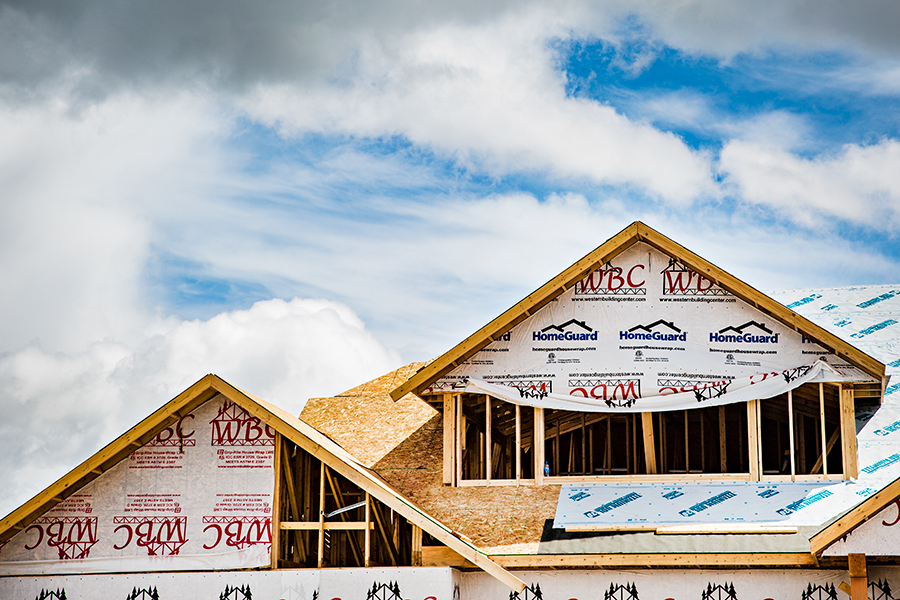High Demand Aggravates Already Tight Construction Labor Force
Contractors are working to recruit younger generations into the construction industry as building demand outpaces worker supply
By Maggie Dresser
In the years right before the 2008 recession, during the last big building boom, Swank Enterprises Project Manager Shawn Baker remembers seeing a surplus of construction workers in the Flathead Valley.
Shortly after, Baker says the strong construction workforce started to dwindle as the housing market crashed and the oil boom in North Dakota took root, redirecting many workers out of the construction industry.
“It seemed like a lot of skilled workers went out to the oil patch,” Baker said. “A lot of people from our valley headed over there years ago, and as things slowly came back, we never got some of that workforce back.”
Managers at Swank Enterprises along with many other construction companies have struggled over the last several years to recruit skilled labor for the construction industry. As building demand has grown in the past few years, interest in the construction trade has failed to grow with it.
According to a survey conducted by the University of Montana Bureau of Business and Economic Research (BBER) published in 2019, only 4% of people who belong to Gen Z say they would consider a career in construction, and a “large fraction of high school students would not consider a career in construction even for a six figure salary.”
“We don’t have young people coming into the construction trades,” said David Smith, the executive director of the Montana Contractors’ Association. “It’s been gradually decreasing over time and it’s not because of wages. As a 19-year-old young person, you could walk on a jobsite with a limited skillset and you would still be offered a job in the $17 per hour range or more.”
Smith believes a poor effort to recruit and expose the younger generation to the construction industry is the source of the problem.
To remedy this, officials at the contractors’ association recently collaborated with the Montana Equipment Dealers Association to develop a pilot program in Billings called Build Montana to recruit high school students.
Working with the Billings School District, six students participated in the pilot program, where they shadowed Knife River Corporation workers to learn the trade. Smith is also working to launch similar programs throughout Montana, including the Flathead, to expose high school students to the industry.

Last year, Swank Enterprises formed an apprenticeship program with Flathead Valley Community College to help develop the workforce, but Baker says recruitment remains an issue as building demand is outpacing the supply of workers in the Flathead.
“There’s a multitude of factors,” Baker said. “Once construction started getting busy and COVID happened and everybody moved here, residential building just exploded. There’s a lot of demand for skilled carpenters for all the other contractors.”
As a commercial contractor, Baker says Swank’s big building boom happened a few years ago when they built the Montana Children’s hospital and several schools around the valley. But now that residential building has skyrocketed, the labor market is particularly competitive.
“Things have been busier in Bozeman and Missoula and Billings,” Baker said. “We’ve maintained crews there, but I’ve found it harder to maintain our crew here in the valley and we’re scrambling to pick people up.”
At Edge LLC, a residential construction company, owner Layne Massie attempted to expand his business as the housing demand grew, but he failed to hire the additional workers that he needed.
Now, he’s focusing on keeping the workers he already has.
“We haven’t lost any,” Massie said. “We’re paying as much as we can and doing what we can do keep the guys we have.”

With inadequate construction workers, Smith says some projects can be delayed six to nine months since crews can only handle so much work at one time.
And as building demand grows and projects get delayed because of worker shortages, Smith says lumber prices continue to rise as projects are put on standby, causing even higher home prices.
With much of the demand coming from new residents, Baker speculates many of those individuals are probably not looking for construction work.
“We’ve got a surge of people moving to the valley but I don’t think a lot of them are looking for jobs in the skilled trades,” Baker said. “They came from areas where they were white-collar workers and now they’re able to work remotely … They’re not here looking for work. They’re here looking for services or homes or remodels or things like that. It’s adding more demand on our current workforce.”
While officials at the Montana Contractors’ Association realize not everyone wants to go into construction, Smith is working to expose the younger generation to the construction industry and focus on the people who are showing interest, like the students in the Build Montana program.
“Construction is not always a clean job and it’s not an easy job,” Smith said. “It’s hard work … But you’ll probably have benefits and health insurance and a 401K.”